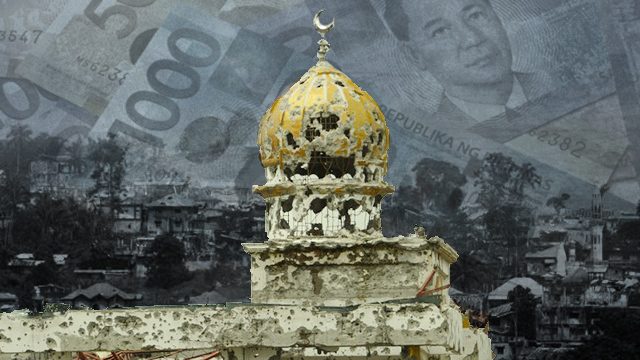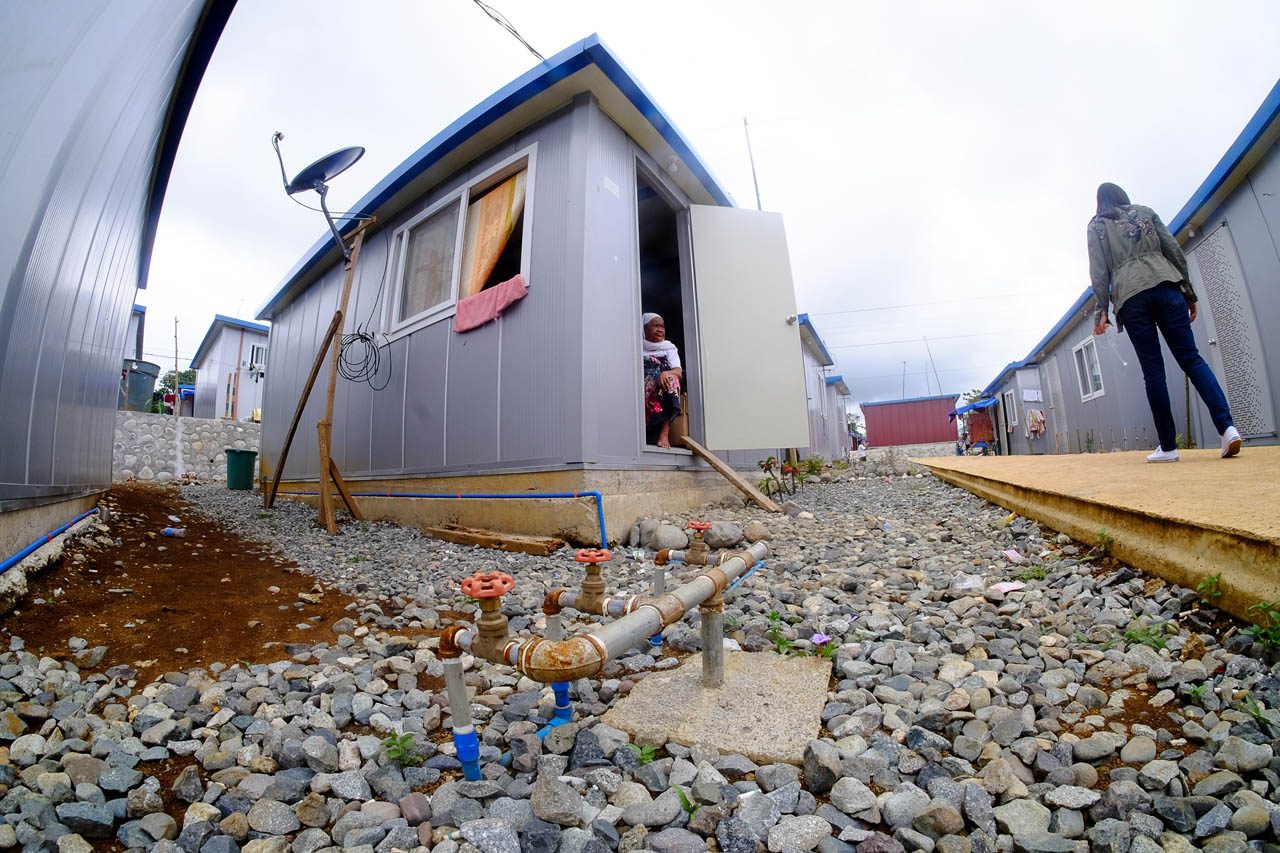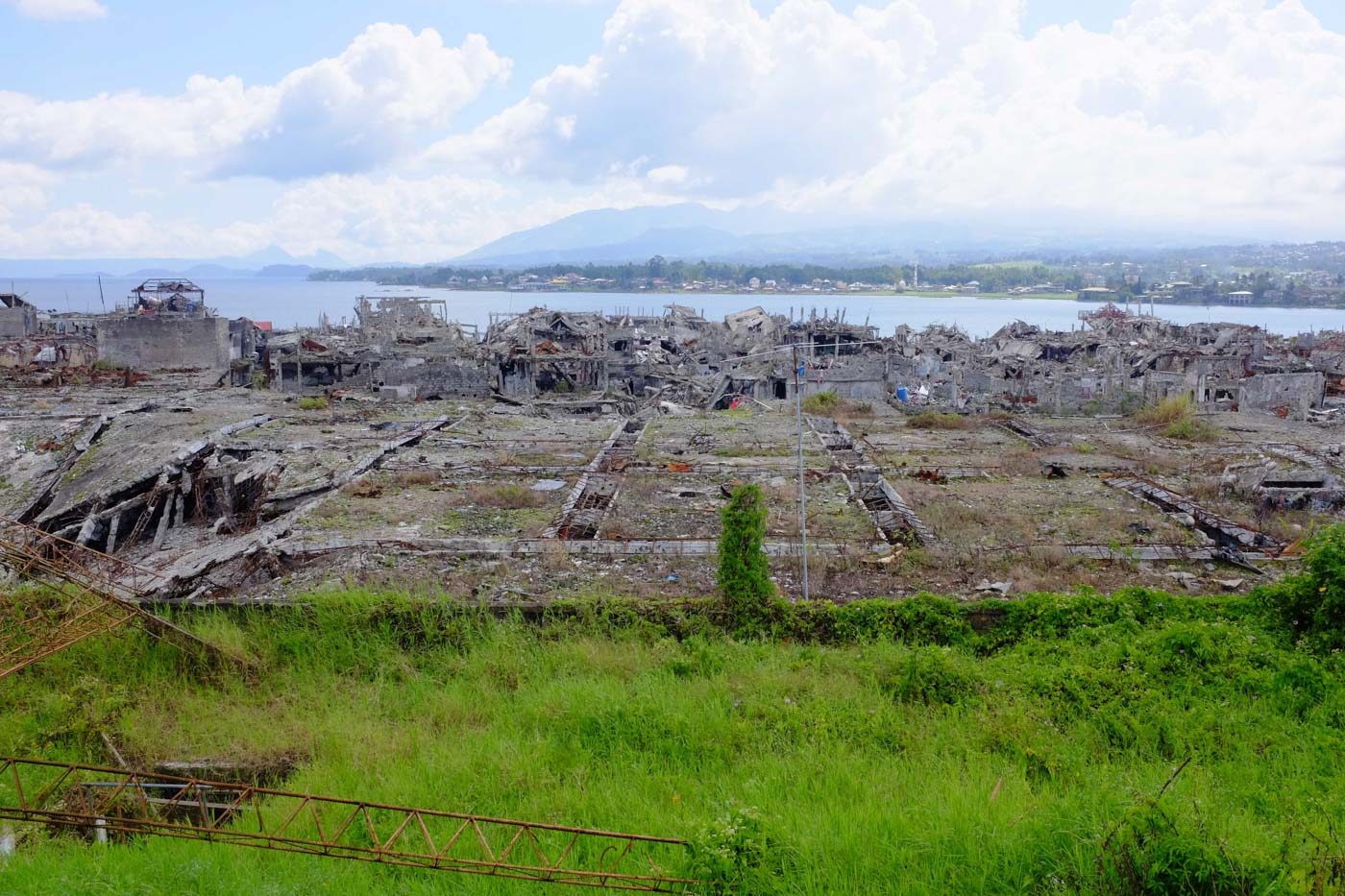SUMMARY
This is AI generated summarization, which may have errors. For context, always refer to the full article.

MANILA, Philippines – Over a year since war erupted in Marawi City in May 2017, the government has released roughly P5.2 billion for rehabilitation efforts as of end-April 2018, according to information from the Department of Budget Management (DBM).
Sitting on the shore of Lake Lanao, Marawi City was a bustling trade and cultural center and home to a diverse community of over 200,000 people.
But 5 months of clashes between government forces and ISIS-linked local terrorists changed that – leaving much of the Philippines’ only Islamic city in ruins till today.
DBM data listed about P5.1 billion was released in 2017, while about P54.1 million has been released in 2018. Most of the funds were for projects providing relief for residents displaced by the war.
Data also showed that projects focused on reconstruction remain few.
How were funds allocated for the rehabilitation of Marawi so far? Here is a list:
In 2018, allocatiojns were also made for the following projects, in addition to the P10 billion approriated for rehabilitation under the National Disaster Risk Reduction and Management Fund:
Gaps remain
However, have displaced residents been able to feel the billions of pesos allocated for relief?
According to the United Nations High Commissioner for Refugees (UNHCR) Philippines, the government’s responses are felt, but gaps in addressing the needs of displaced residents remain.
“While response has transitioned from emergency to early recovery, the displaced population face humanitarian gaps related to basic services, access to healthcare, education, and livelihood opportunities,” UNHCR told Rappler.

Last year, the government started to turnover transitional housing units in Barangay Sagonsongan in Marawi City. An initial 500 temporary shelters were given to displaced Marawi residents in December 2017.
UNHCR said the government relocation site now hosts 3,700 residents, most of whom come from the 24 barangays that were most affected during the Marawi siege.
It’s in these shelters where stable access to food, water, and sanitation facilities were among the “most prominent” challenges faced.
“The transitory shelters do not have an onsite water source, and water is trucked in daily. The site also needs an efficient drainage system, preventing septic sewage with no filtration from flowing directly into nearby bodies of water which are sources of potable water to Marawi and neighboring municipalities,” UNHCR said.
While government has allocated some P39.9 million for water supply in the relocation site through the Local Water Utilities Administration, Rappler reported that contractors have not been able to find a sufficient water source. (READ: Marawi family pays P100 for water daily in gov’t relocation site)
As a response, government provided rain barrels to help provide residents with access to water.
Alongside this are issues with land ownership as well as protecting the welfare of children who have missed schooling and face malnutrition remain.
Reconstruction efforts
The last few months have also seen pressure mounting on the government to start reconstruction of Marawi City.
Analysts, however, said the limited funds allocated for reconstruction efforts may be put into context with the reality that government cannot go straight into reconstruction and rehabilitation only months after conflict was declared over.
UNHCR Philippines also said assistance on the ground highlighted the need to balance resources between relief and reconstruction.
“Most [residents] are still dependent on assistance, hence the need to balance resource allocation to address outstanding humanitarian needs vis-à-vis early recovery and rehabilitation initiatives,” they said.
According to analysts, what the public can and should focus on for now is close scrutiny of the planning processes, on which reconstruction and rehabilitation are dependent.

For one, the deadline to present the final design plans for the rehabilitation was previously moved from May 25 to May 30. It was moved again to June 12, a deadline that the government once more failed to meet.
The Bangon Marawi Consortium, which Task Force Bangon Marawi (TFBM) initially picked to rebuild Marawi City’s most affected area, has been disqualified after failing to show by the June 27 deadline its financial capacity to complete the project.
TFBM head Eduardo del Rosario said the task force would now start negations with new developers. (READ: Chinese-led Bangon Marawi Consortium disqualified due to fund shortage)
Rappler has also reached out to TFBM for updates on the rehabilitation schedule, but has not received a response as of posting.
Del Rosario – well aware of criticisms the task force faced – previously said rehabilitation must not be rushed.
“We don’t want to rush things because, otherwise, we can’t take a good look at specifications or the quality of the infrastructure…. Negotiations are bloody. We do not want to compromise the quality as well as the cost. There has to be a balancing act,” Del Rosario said last June 8.
According to security experts, this balancing act is where the task of rebuilding Marawi becomes crucial since the humanitarian situation in Marawi is also a core a security issue. (READ: Marawi rehab: ‘Build communities resilient to threat of extremism’)
Security experts have argued that a successful and transparent rehabilitation, wherein residents of Marawi are involved, is important in combating the issues that violent extremist groups can exploit in the future. (READ: Experts push for community-led Marawi rehabilitation)
But as government and aid organizations continue their relief efforts, UNHCR Philippines said the wish of Marawi residents remains unchanged: “They hope to return home.” – with a report from Aika Rey/Rappler.com
Add a comment
How does this make you feel?
There are no comments yet. Add your comment to start the conversation.